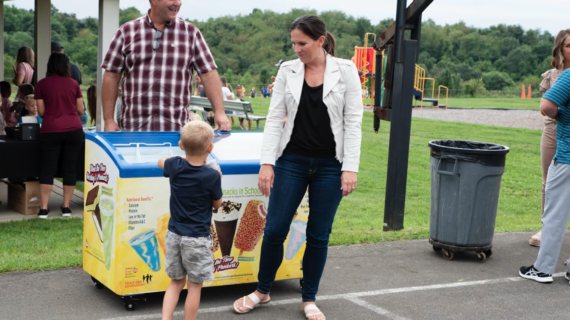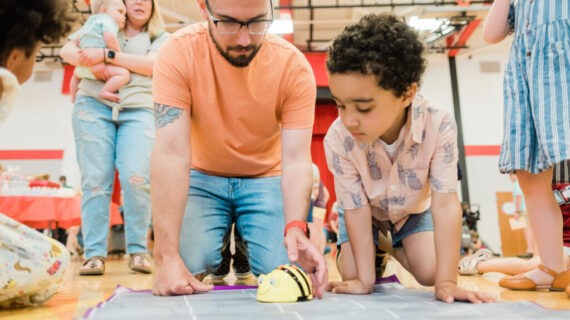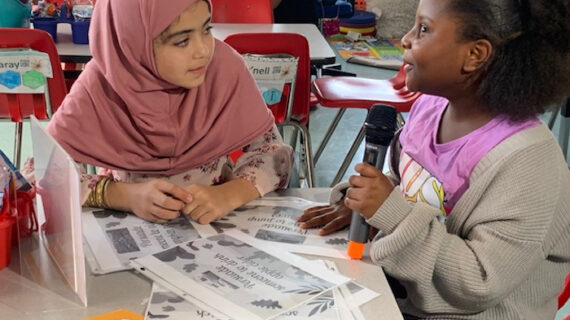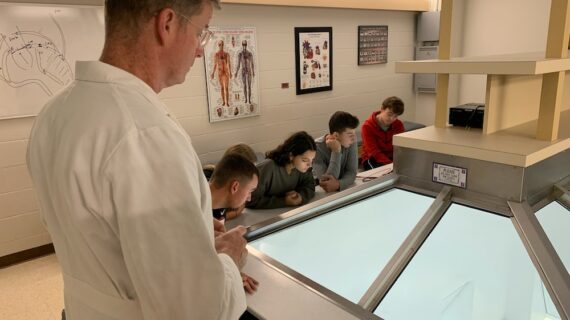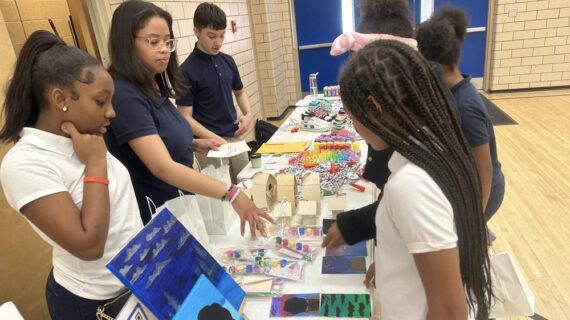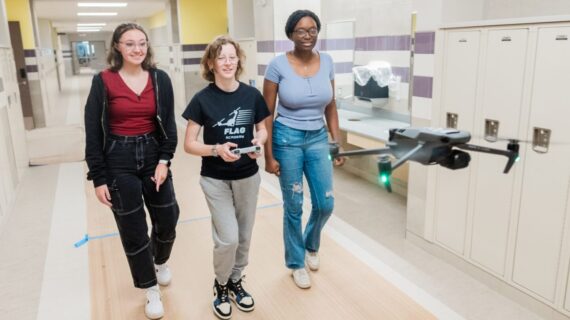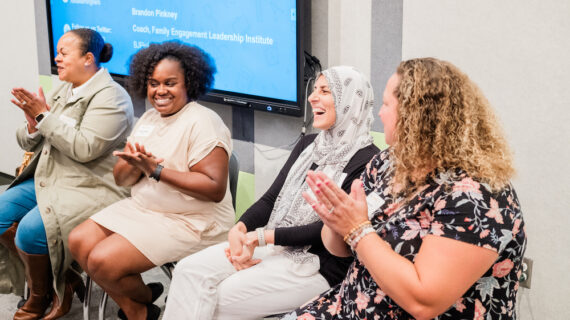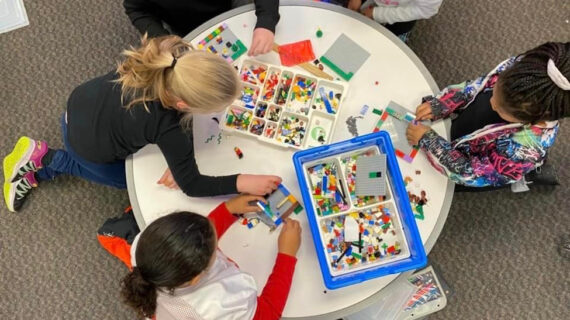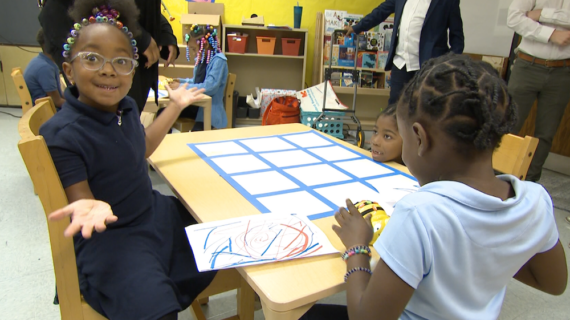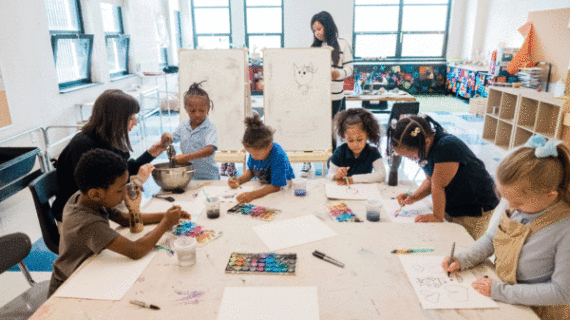
AI in Pittsburgh-area schools: How are districts handling this powerful new tool?
Photo above by Igor Starkov via Unsplash.
At Belle Vernon Area School District, students in Daneen Watson’s Spanish 1 class use the words and phrases they’re learning to correct paragraphs written in the language they’re trying to master. Working in groups, they comb through Spanish sentences and find errors, discussing what they find and how best to rewrite it.
Students have used this method to learn a foreign language for generations. But something decidedly 21st-century is happening in Watson’s classroom: These paragraphs were written not by a human, but by the artificial intelligence system ChatGPT.
At New Kensington-Arnold School District, administrators and teachers observed a second grade lesson in reading comprehension in which teachers helped the class input their own text and artwork using ChatGPT and starryai. The ideas they developed, channeled through the quickly evolving tools of AI, allowed the students to produce a book they titled, “Miss Fabulous Loves Her Coffee,” about the day in the life of their teacher.
As OpenAI’s ChatGPT (which stands for Chat Generative Pretrained Transformer), Google’s Bard and other educational AI platforms become mainstream student tools, local educators navigate the waters of rapidly changing technologies each day.
Are there worries about students outsourcing their thinking and creating to a synthetic brain? Or does AI open new doors to student-driven creativity? How do school districts and individual teachers decide which tools to use and how their students are allowed to use them?
“It’s huge, and it’s very hard to wrap the mind around how many different ways this finds a place within our school environment,” says Tim Hammill, director of curriculum services for the Westmoreland County Intermediate Unit (WIU).
Through shared information and seminars from local experts, district leaders in Hammill’s network are working to understand and learn more about the pros, cons and appropriateness of educational AI.
Staying a step ahead – AI teacher training
Schools can’t simply opt out of interaction with AI, because the kids they teach have already begun accessing it. For example, Hammill says, students have figured out that they can use AI to do the standard homework assignment.
“That’s what drives the need for teachers to understand how their instruction needs to change and their assignments need to change,” he says. “We don’t have the option to turn it off and make it go away.”
At WIU training sessions, teachers and administrators learn how to create assignments that leverage AI’s capabilities in ways that teach. This might mean checking the accuracy of a ChatGPT-produced essay on Abraham Lincoln based on what a student has already learned about his life. Or it might mean giving a prewritten passage about Lincoln to students and asking them to rewrite it in the first person, as though they were Lincoln.
“We still need to put those critical skills and concepts that the kids need to learn in front of them; the system is only a part of the equation,” said Rebecca Henderson, curriculum services supervisor of the WIU.
At a recent district training event at New Kensington-Arnold School District, approximately 100 teachers were introduced to lesson-producing generative AI tools. They learned to use ChatGPT to create assessments. And using text-to-voice generating platform Uberduck and other history-focused programs, they discovered how to apply the sound of famous voices to quotes and even hold conversations — complete with AI-emulated responses — with virtual versions of historical leaders.
New Ken-Arnold’s superintendent Dr. Chris Sefcheck knows there are those who may feel students should only learn by taking pen to paper or using computers in the ways that we have for a generation. But he sees opportunity for students to build critical thinking and problem solving skills through these new tools.
“The biggest piece is that artificial intelligence has to be paired with human intellect,” Sefcheck says. “You have to be able to not only know how to use AI, but know how to use your brain for the critical thinking and problem solving that AI doesn’t do for you.”
At Burrell School District, middle school learning coach Courtney Barbiaux enthusiastically pursues AI training — then passes her knowledge on to teachers. She recently gave a presentation on educational platforms including MagicSchool, a free resource that creates lessons, generates questions, produces classroom stations and more on just about any topic.
Supporting classroom lessons in creative ways
Although AI isn’t written into daily lessons, there are teachers in the WIU using AI to help with tutoring or offer guidance to improve students’ writing and math skills — all under teacher supervision.
In Burrell’s eighth grade classrooms, Barbiaux has introduced the concept of machine learning and how to appropriately use AI in ways similar to how students already use Google to do research.
“We talked about how you could use ChatGPT to search more information, but you’re not copying and pasting,” she says.
Meanwhile, in Burrell’s sixth grade reading classes, students summarize passages generated by ChatGPT at various skill levels. And though it’s not part of daily instruction, Burrell’s technology integration coach Melinda Kulick says the district is exploring AI as a personalized learning tool to increase student engagement.
One possible example, she says: “Taking things that are of interest to students, putting them into ChatGPT and asking for a lesson on fractions for a student who loves soccer.”
Watson, of Belle Vernon, learned about ChatGPT at a conference last summer and continues to increase her proficiency in other platforms like MagicSchool and Canva Magic Design. Once other teachers in her department are on board, she hopes to introduce her students to AI concepts in addition to the AI-generated lessons she currently uses.
“I have seen an increase in scores, and the students do love using AI,” she says, “even though I haven’t explicitly told them what it is.”
At Franklin Regional, students use the math platform ALEKS, which now includes an AI component that assigns assessment and evaluates next levels of instruction by tracking student learning and performance patterns.
Superintendent Gennaro Piraino says he’s mindful of kids – including his own, who are in the district – spending “hours in front of the computer.” But he sees value of programs like ALEKS.
“It has individual prescriptive instruction or remediation when you need it,” Piraino says. “It gets as challenging as the student can handle based upon the response.”
Groundbreaking tool or temptation to cheat?
Rules and policies regarding AI fall under the umbrella of academic integrity. But this is all so new and rapidly evolving. So, Piraino says, “I think people have different perspectives on it.”
He believes educators have the responsibility to understand their students’ needs while teaching ethical uses of AI. At Franklin Regional, some teachers are putting assignments through GPT Zero, a detector that can tell the likelihood or the percentage of a document produced through AI.
Teachers need to be in the business of verifying information, Henderson says. And if a student’s response is broader than what the assignment asks, that has to trigger a warning bell: Did the student really go above and beyond because they are that passionate about this topic? Or because the system went above and beyond.
Cheating is always a risk. But students need to understand the tools of the era in which they live and will one day work.
Students are “going to go out into the world and compete against people who are using it effectively and using it well — and sometimes, using it unethically,” Piraino says. “If we don’t utilize this opportunity in an environment where we know it’s safe, then we put them at a disadvantage.”
